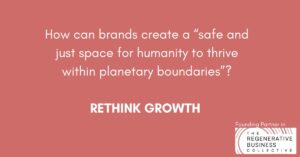Our Managing Director, Rachel Bevans, gives an overview of the state of the nation for talent and provides some insights into developing your employer brand and employee value proposition. This article was written for First 5000 where it was first published on 16th May 2021.
State of the nation for talent
Looking beyond COVID-19 with cautious optimism, there is significant strategic business planning happening now for medium sized businesses.
Many businesses are considering the “future of work” and what it looks like for their organisation.
They are reflecting on the integration of technology, skills requirements as well as a greater focus on employee wellbeing, diversity, equity and inclusion.
While we have seen an increase in competition for talent during COVID-19 there has been a decrease in voluntary employee turnover. This has left experts predicting that, not unlike the global financial crisis in 2009, people will seek to make a change to their work circumstances when they feel safe.
As a result, now is the time to revisit your purpose, values and behaviours, and develop your employer brand, employee value proposition and employee experience. These aspects work together to attract, retain and engage the right employees for your business, driving business growth, change and sustainability.
How to develop employer brand and employee value proposition
Building from your strategic business and human resource plans, it is important to set out specific objectives about what you wish to achieve so that you can measure success and make changes to optimise performance.
The consultation process can be vast including surveys, focus groups and interviews across the initial discovery process, throughout development and in working out the initiatives you need to deliver against it.
Whilst there are benefits of face-to-face consultations, during COVID, we learned that you can successfully conduct the process entirely remotely. In fact, we were able to break down the silos in between states, regional and urban offices, all with additional cost benefits.
Done well, the process in itself strengthens current employees’ relationships and prospective employees’ perceptions of the organisation.
You can also see the differences between leaders, middle managers and front-line or support employees, and develop strategies to help building a more coherent, yet personalised employee experience.
Employees can see that you’ve asked the difficult questions and listened to their views and ideas, and their engagement increases as a result.
Between the key consultation stages, there is a stage of strategy development of the purpose, values and behaviours; employer brand, employee value proposition and employee experience.
Depending on the size of the organisation, you may look to segment employees so you can develop more relevant employee value propositions and experiences for different cohorts. You may also develop your corporate or customer-facing brand at the same time, at the very least ensuring that this work aligns with it.
Creative direction and ideation workshops are applied to develop the identity and experience that brings the strategies to life. Finally, plans are developed to disseminate the new strategies to excite leaders and employees, maximising engagement across the organisation.
The resulting employer brand will attract, retain and engage the right employees for the future of your business.
About Rachel Bevans
Rachel Bevans is strategist, researcher and business director, with over 28 years’ experience helping organisations become brand-driven, customer-centric and employee-engaged. Rachel founded The Healthy Brand Company in 2012 to unite her brand experience, passion for health and wellbeing and curiosity about what motivates people.
Contact rachel@thehealthybrandcompany.com




